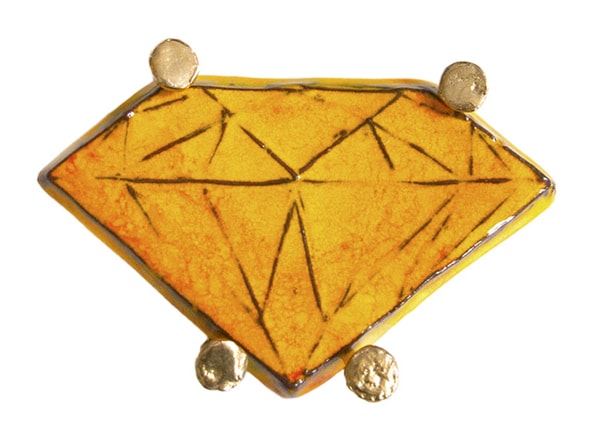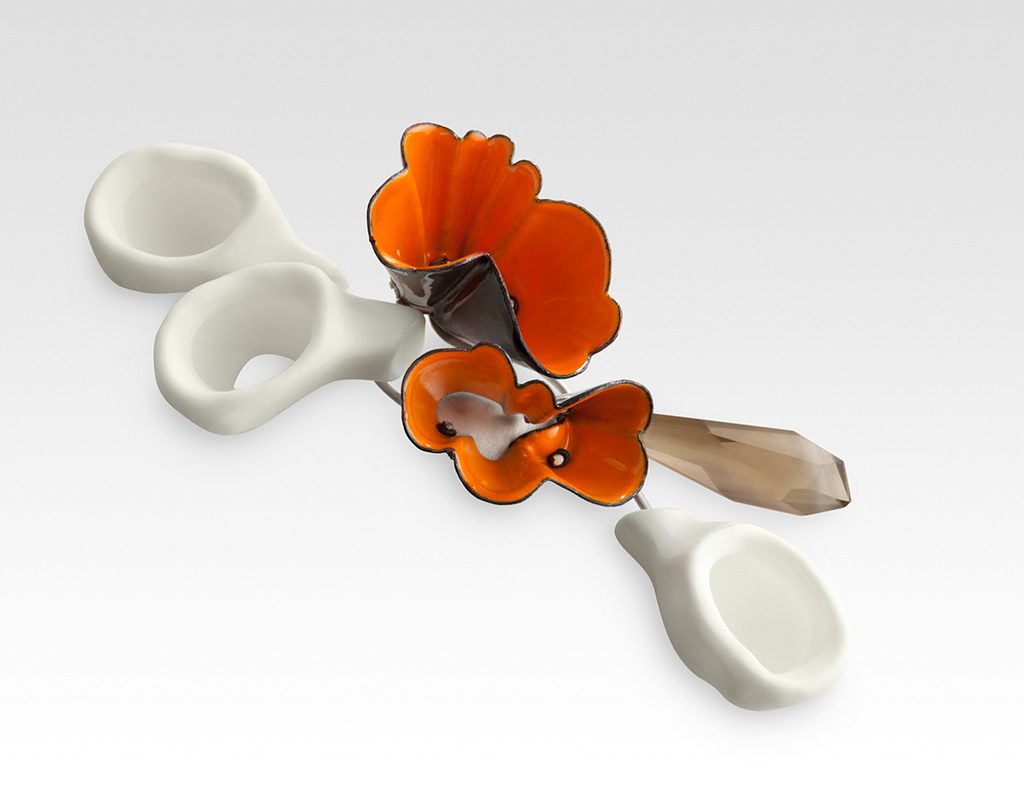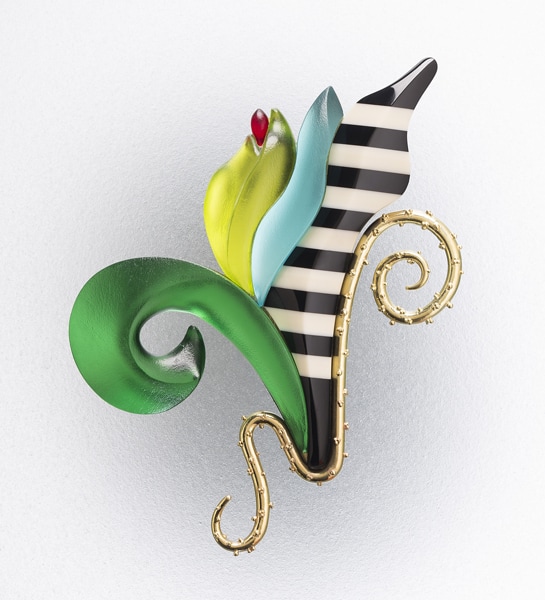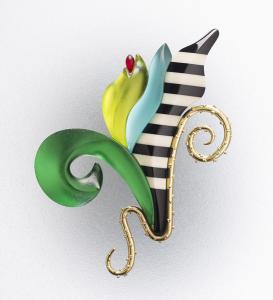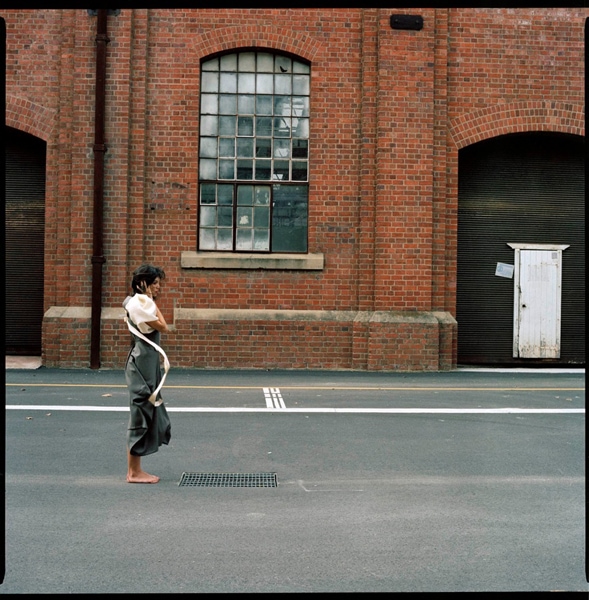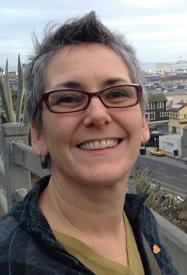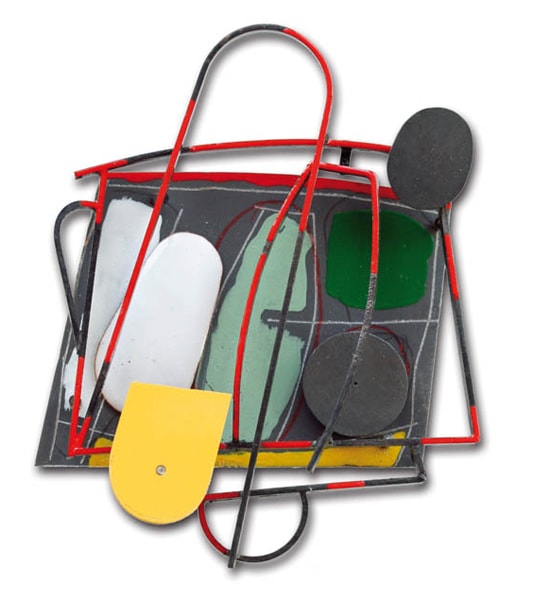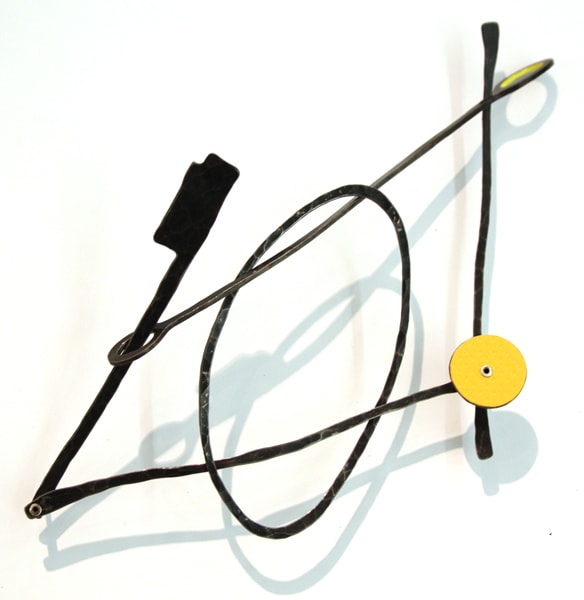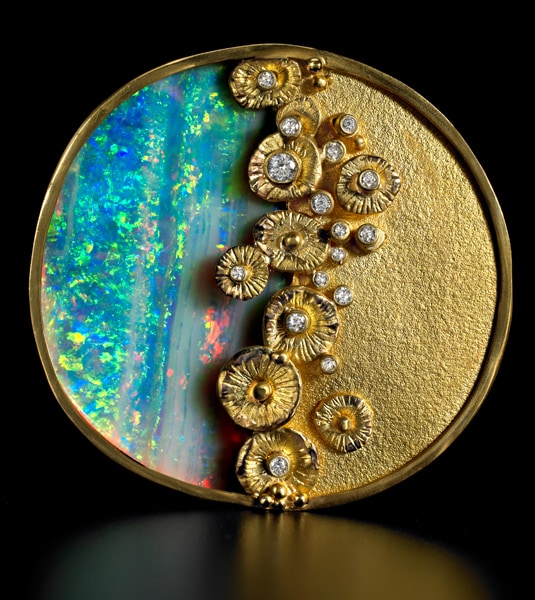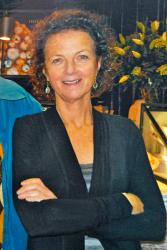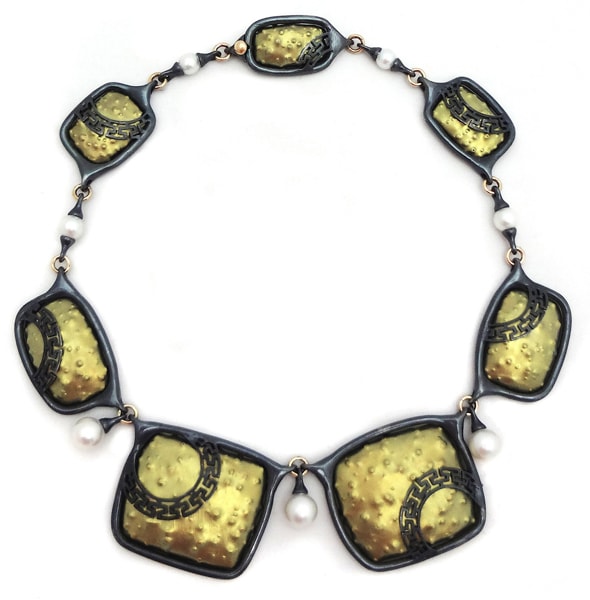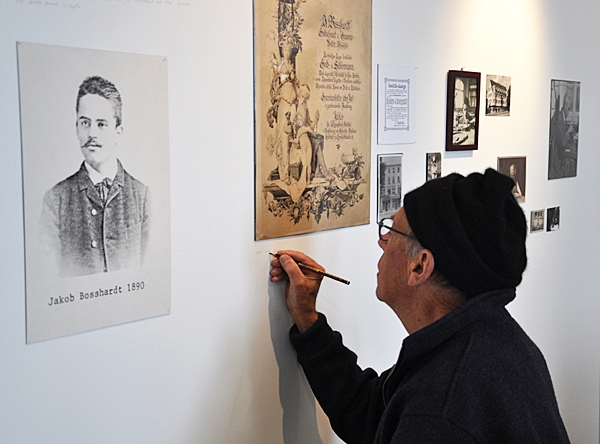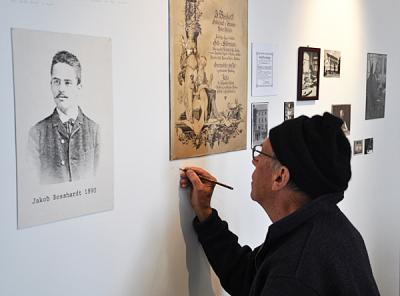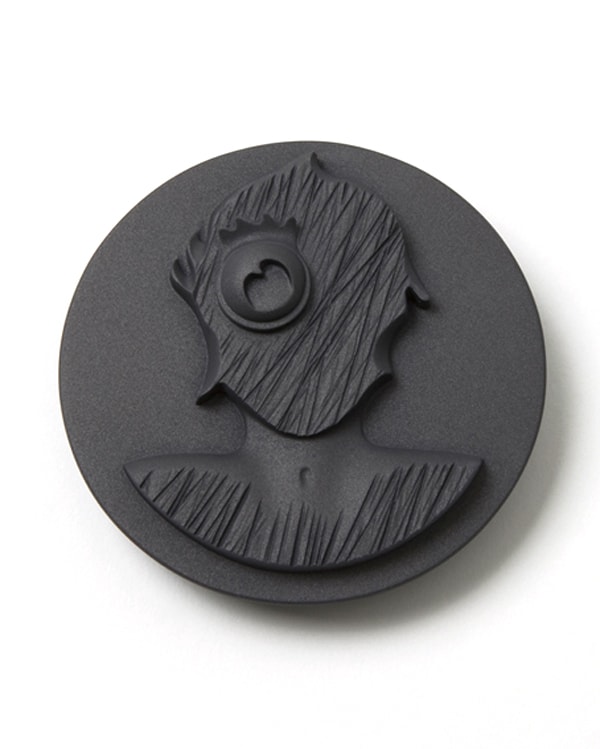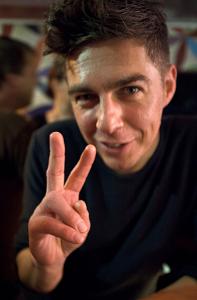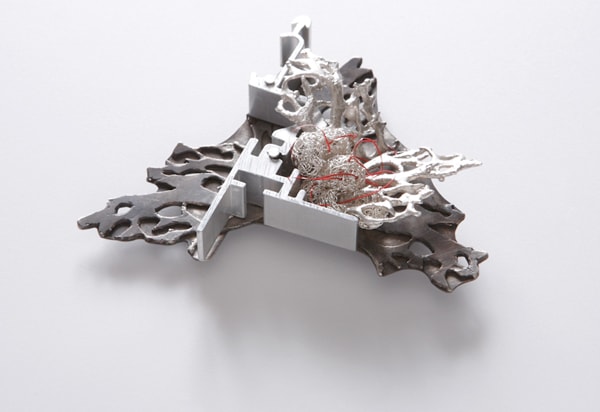Willemijn de Greef: Recollection II

 Willemijn de Greef’s summer show at Galerie Marzee in Nijmegen, The Netherlands, just ended, but I wanted to know more about the large gem-shaped ceramic brooches she produced and about her thoughts on work she has done in the past. In particular, a large gold earring AJF featured in the show Geography has always intrigued me. The story behind it is very moving. I am impressed with the large scale of Wilemijn’s jewelry and the interaction she has with folk traditions.
Willemijn de Greef’s summer show at Galerie Marzee in Nijmegen, The Netherlands, just ended, but I wanted to know more about the large gem-shaped ceramic brooches she produced and about her thoughts on work she has done in the past. In particular, a large gold earring AJF featured in the show Geography has always intrigued me. The story behind it is very moving. I am impressed with the large scale of Wilemijn’s jewelry and the interaction she has with folk traditions.
Susan Cummins: I understand that much of your work relates to where you grew up in Zeeland, The Netherlands. Can you describe it?
Willemijn de Greef: Only Weefsels, the collection of work I made for my graduation, and Zeeuwse knopen, some rings that I made before my graduation year at Rietveld Academy, are related to Zeeland (Sealand), a region in the south of The Netherlands. My parents and I moved there when I was seven years old. It was the beginning of the 80s. I remember the 70s craftwork of my mother decorating the house, some macramé pieces and several ceramic objects. I’ve combined my love for craftwork with traditional costumes from that region. The shapes are free interpretations of the jewelry worn with the costumes. I’ve enlarged them to create the link between the jewelry and the costumes. I also love the small mistakes and flaws in handcraft. As jewelers, we are always working in detail, erasing as many errors as possible. I love those tiny mistakes. I like to make them visible.
Willemijn de Greef: Recollection II Read More »
